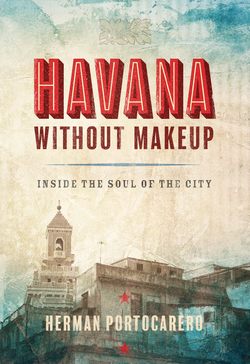Читать книгу Havana without Makeup - Herman Portocarero - Страница 22
На сайте Литреса книга снята с продажи.
Оглавление15.HAVANA’S HOUR ZERO
It may seem preposterous that the modest nighttime street vendors along the Malecón wall were until very recently seen as subversives and counterrevolutionaries by official Havana, as they undermined the state monopoly on any commercial activity since the 1970s. When I was present at a long private monologue by President Raúl Castro in March of 2015, he spontaneously admitted that “when we were young we didn’t know too much about the economy, or else we would have handled things differently.”
But my view on this was also shaped by my experience in New York in late 1988. On the seventh of December, Mikael Gorbachev in the General Assembly of the United Nations purely and simply buried the global Cold War, unwittingly signing his own political death warrant, the failure of his perestoika reforms and the implosion of the Soviet Union in its unavoidable aftermath.
When Gorbachev visited Havana shortly after his UN speech, in early 1989, he basically told his Cuban allies that the years of massive economic support were over. Authentic dismay was written on Fidel Castro’s face for the first time in thirty years. Cuba had become almost entirely dependent on Soviet-bloc aid and trade. The end of the support system was a first blow. Worse would follow soon.
Moscow’s rule and empire imploded in 1991. The end of communism in Europe was not just an unimaginable catastrophe to the Cuban revolutionaries. It was also the final proof that Leninism/Stalinism was impossible to reform – a lesson not forgotten in Havana even today. But back then, there were more immediate concerns. The country had thrown in its lot and the conditions for its very survival with a supposedly eternal Soviet Union. The Cuban economy collapsed overnight. Havana was gripped by despair that soon turned to acute panic.
Still clinging to a tradition of euphemisms, this deep economic and social crisis was officially labeled El Período Especial (the Special Period). Havana had long been used to lining up for food and other necessities, but for all its shortcomings and unavoidable black-market correctives, the system had nevertheless worked.
The economic relationship with the Soviet Union was in essence based on bartering overpriced Cuban sugar against underpriced Russian oil. As a consequence, the country had long given up growing anything but sugar cane, which was now suddenly without a market, and electricity and transport in Cuba depended on the cheap oil, which was now drying up. Food was mostly imported from within the communist common trade system, the Comecon, and mostly from Soviet allies in Eastern Europe. That network was now also dead.
On top of the food shortages, and the black market taking over what little was still available, the energy shortages resulted in such frequent and extended power cuts that the joke became to replace the complaints about apagones (power outages) with short rejoicings over alumbrones (light-ups) at the rare moments of continued electricity.
During Havana’s annus horribilis, 1994, thousands of boat people setting off from the Malecón under the eyes of overwhelmed policemen threw themselves on the mercy of the waves in improvised and unseaworthy rafts, hoping to reach Florida. Many would perish. In kindergartens in poor neighborhoods, toddlers scraped plaster from the walls to eat it, spontaneously trying to make up for vitamin deficiencies. I knew the habit from poor gypsy kids doing likewise in Andalucía.
Elegance and strong character had always represented the city’s self image, as illustrated by her allegorical statues and by trademarks on cigar bands: a multiracial india fina, like the monument in the Parque de la Fraternidad. Now she was suddenly dressed in rags of despair.
It was Havana’s Hour Zero.
